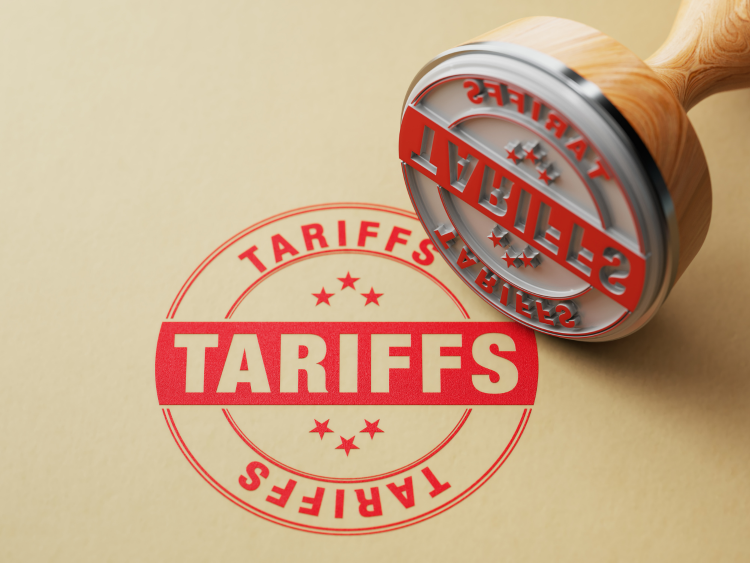
The IT industry arguably stands today as one of the most rapidly changing businesses where rapid progress in technologies and dynamic market landscapes change the industry's direction day by day. Now more so than in recent years it has become a point of visibility for companies to gain more market share, improve capabilities, and increase competitiveness. The current paper peeps inside the very dynamics of the IT market relative to mergers and acquisitions and the implications of such strategic moves concerning businesses, consumers, and the industry at large.
1. Driving forces behind Mergers and Acquisitions in IT Sector:
a. Technological Advancements: The constant innovation in the technology sector is one of the biggest reasons behind M&A activity taking place in IT. Many companies look forward to acquiring or merging with other companies wherein they have cutting edge technology so that they can remain ahead of the competition. For instance, the launch of the 5G technology has led many telecommunication and technology powerhouses to enter into strategic mergers so that they can leverage what this disruptive technology would potentially offer.
b. Market Expansion: Mergers help to create wider market bases of companies. This could be entering new areas geographically, new segments of customers or even diversifications in service and product offerings. To easily illustrate this a regional software company can be acquired by a global tech giant for market entry/expansion purposes.
c. Economies of Scale: Economies of scale feature among the prominent reasons for the inorganic growth of companies through mergers and acquisitions. Economies of scale can result from a merger's ability to combine the operations of multiple companies in a way that better overall efficiency accumulates. For example consolidation of backend operations and shared resources post-merger will result in cost reduction and improvement in competitiveness.
d. Talent Acquisition: In an industry of high competition like IT acquiring capable and experienced talent becomes indispensable. In a way, mergers and acquisitions offer an approach to talent infusion towards the form of a specialized team or individual to increase the capabilities of the acquirer. The infusion of talent does not only address the skill gaps but also promotes a culture of innovation in the acquiring company.
2. Recent Trends in IT Mergers and Acquisitions:
a. Dominance of Cloud Computing: With the very vast utilization of cloud computing, big names in the IT industry have forward integrated themselves through M&A ventures that constitute cloud computing. It is in this light that Microsoft acquired GitHub and Red Hat. This is a trend that brings in cloud-native solutions and platforms, representing how the industry has held to the scalable and flexible infrastructure.
B. Cybersecurity Consolidation: The increased occurrence and form of a cyber threat brings about an upsurge of M&A deals in the sector of cybersecurity. Companies are looking to fortify their defenses through acquisition of specialized security firms. In that light, this is a cue that the industry acknowledges fully that cybersecurity is an indispensable issue in the digital age and, therefore, making strategic moves towards putting more resilience into the matter.
c. AI and Machine Learning Integration: Artificial Intelligence and Machine Learning are bringing transformation in the IT landscape. Companies are acquiring big startups and big players to build up solutions that will be infused with AI and ML in its processes and offerings. Such acquisitions of AI startups will keep such leading companies at the innovation forefront in offering more intelligent solutions to their clients.
d. Digital Transformation Initiatives: As businesses are swept into this relentless digital wave in almost every industry companies in the IT sector are forced into consolidations in a bid to remain relevant and proactively present to businesses a combined basket of solutions in order to offer their way forward toward a more digitized business model. In this regard, mergers combine competencies in IoT, data analytics, and automation technologies to cater to end-to-end digital solutions, thus making the merged entities more attractive to businesses on their digital disposition.
a. Enhanced Capabilities: Mergers and acquisitions offer stronger technology capabilities, extended service range, and integrated solutions for the clients. This is probably very visible when companies with complementary strengths come together, creating synergetic benefits for the acquirer and the acquired.
b. Thereby Increased Competition: With more often consolidation in the IT industry, bigger players are likely to emerge. Small players will, accordingly, find it tough to match the scale or size of these giant entities. On a different note, this can indeed bring in smart competition and, at the same time, breed innovation among the companies to bring in that differentiation factor amid the clutter.
c. Accelerated Innovation: The entry of new technologies and talent through M&A often dramatically accelerates the pace of innovation for the acquirers, thereby contributing to the creation of cutting-edge solutions. New perspectives and ideas from inflows can trigger breakthroughs in the merged companies and place them at the front of industrial changes.
d. Operational Efficiencies: It may lead to operational efficiencies, savings of operational costs, and better use of resources. These operational efficiencies usually result from reduction in duplicated functions, streamlining of workflow, and an optimized consumption of common resources, which make the organizations much leaner and agile.
4. Implications for Consumers:
a. Diversified Product and Service Offerings: Through mergers and acquisitions, the range of different product and service offerings that will be made available to consumers will be diversified, hence giving them more options as well as improved solutions. For instance, the addition of complementary products from merged entities is made to widen the range of consumer needs that the comprehensive suites address.
b. Quality of Service: Consolidation of resources and capabilities may yield improved quality of service as firms fight to provide more value to their customers. Merged entities, with their combined expertise, can provide far more robust and reliable services, contributing to an overall improvement in the consumer experience.
c. Market Disruptions: While M&As can have favorable impacts, in an inverse manner, they may also ignite market disruptions. With integration issues and corporate culture change, the impact will probably be felt on the customer experience through the firm. Therefore, careful change management on the transitions is necessary in order to cause minimal disturbance and for the customer well being to be realized.
d. Pricing Dynamics: The change in the market structure on account of M&A activities sometimes has a bearing on the pricing dynamics also. The consumers may face changes in pricing strategies when the businesses realign to the new market structure. While higher competition may book more competitive offers in the market the consolidation of the predominant players may tend to have stabilization of prices or sometimes even hikes in some segments.
5. Industry-Wide Implications
a. Regulatory Scrutiny: Since the IT industry is one of the integral parts of modern economies, the majority of these big mergers and acquisitions often come into regulatory purview. Different governments and regulatory bodies are always on the lookout for the justification of these activities since they encourage fair competition and protection of consumer interest. How is fairness in the market balanced with facilitating innovation and deterring anti competitive practices?.
b. Market Monopoly Fears: The consolidation of major players in the IT market may breed fears of market monopolies. Regulatory bodies are set to intervene, with rules that may prevent anti-competitive behaviors in the market, thereby ensuring a healthy and diverse market. Overcoming such fears is moreover important for maintaining a competitive scenario that fosters innovation and benefits the consumer.
c. The Global Market Impact: What is local in terms of the effects that result from the mergers and acquisitions in the IT industry have the potential of becoming global. Market dynamics, competitiveness, and innovation will all be touched and transformed across the globe. The integrated nature of the global IT market implies global ramifications of strategic moves of industry leaders, thus requiring an in-depth understanding of what the global implications of the M&A activities are.
Conclusion
The central point in changing the IT industry is taken by mergers and acquisitions, since they influence the way in which companies compete, innovate and deliver value to consumers. Such strategic moves bear both the benefits derived from the merged entities and the challenges associated with integration, market dynamics, and regulatory scrutiny. Trends and dynamics that this continuous consolidation of companies causes for businesses within the sector need to be monitored by firms, consumers, and the overall sector. The successful and sustainable fine line of managing between these dynamics will define companies' success within an industry of continuous change.
Trending Posts

Global Silver Nanoparticles Market
The global silver nanoparticles market was valued at $2.08 billion in 2020, and is projected to reach $4.1 billion by 2027, growing at a CAGR of ~17%

The Basic Pension Comes - Federal Cabinet Decides On the Pension Supplement
Financial security in old age is an issue that is causing stomach pains for more and more people in Germany. Low-wage earners fear the elderly. The ba

The Future of Artificial Intelligence
In recent years, the field of artificial intelligence (AI) has witnessed unprecedented growth and transformative advancements. As AI technologies

"LNG Bunkering" Here is something you must know!
In the current scenario of growing pollution, companies are trying to adapt more and more sustainable approach that not only gives eco-friendly result

Sailing into the future with Autonomous Ships
Autonomous Vehicles (AVs) are the uproar of this era. After airways, thanks to the companies like Tesla, that people are now getting used to see drive

Rising Demand For Uninterrupted Power Supply Is Expected To Drive The Power Rental Market
Todays world is totally reliant on electric power. There are many things which are not manageable without electricity. Power rental is a concept where

Rapidly growing IT industry coupled with the trend of bringing your own device (BYOD) is expected to provide new opportunities for growth of Cloud Collaboration
Cloud collaboration is the process of sharing and co-authoring the computer-based work through cloud technology

Fact check on UV Disinfection for COVID-19
Many regulatory authorities and bodies believe that UV disinfection technologies can play a role in a multiple barrier approach to reducing the transm

Vaccination: Vaccination Against Measles is Now Mandatory in Germany
The subject of compulsory vaccination has always heated peoples minds and caused emotionally charged discussions. The latest law in this area - the ob

The Global Ventilator Market Grows at a CAGR of 7.75 %
The Global Ventilator Market, which was at $688 million in the year 2016, is about to double by the year 2025, and reach a value of $1,347 million. Th
Recent Posts

Tariffs & Trade: Key Trends, Policies, and Market Impact
A tariff is a tax imposed by a government on imported or exported goods. It is primarily used to regulate international trade by either encouraging domestic production or generating revenue for the government.

The Global Buy Now Pay Later (BNPL) Market: Growth and Opportunities
The global Buy Now Pay Later (BNPL) market has emerged as a revolutionary financial solution, transforming how consumers approach shopping and payments. Offering flexibility and convenience, BNPL allows consumers to make purchases and pay.

Global Motorhome Market: Growth and Forecast
The motorhome market has gained significant momentum over the past decade, driven by rising interest in outdoor tourism, evolving consumer lifestyles, and advancements in vehicle design and technology. As a preferred option for travelers seeking.

The Global Poppy Seed Market: Growth and Trends
Poppy seeds, derived from the opium poppy plant (Papaver somniferum), have been a vital component in global culinary, pharmaceutical, and personal care industries for centuries. The global poppy seed market is gaining traction due to its versatility.

Global Plant Breeding and CRISPR Plants Market
The global food industry is facing immense pressure due to rising population levels, diminishing arable land, and the impact of climate change. Innovations in plant breeding, particularly the use of CRISPR technology, are reshaping the agricultural .

Global Pheromones Market – Trends, Opportunities, and Forecast
The global pheromones market has witnessed significant growth, primarily driven by the rising demand for eco-friendly pest control solutions in agriculture. Pheromones, natural chemicals emitted by insects and other organisms to communicate.

The Role of Technology in Oil and Gas Risk Management
In an industry as dynamic and complex as oil and gas, risk management is crucial for ensuring operational efficiency, regulatory compliance, and safety. Risk management software has become an indispensable tool for companies in this sector.

Global Smart Grid Sensors Market
The global energy landscape is undergoing a significant transformation, with smart grid technologies at the forefront. Smart grid sensors, a critical component of modern energy grids, enable efficient monitoring, energy distribution.

Global Photovoltaic Glass Market Research Report
The global photovoltaic (PV) glass market is experiencing unprecedented growth, driven by the accelerating shift towards renewable energy and the integration of sustainable materials in construction. This report delves into the market’s key growth.

Exploring the Growth of the Global Micro Solar Inverter Market
The Global Micro Solar Inverter Market is forecasted to expand significantly, growing from an estimated value of USD 4.8 billion in 2024 to USD 14.6 billion by 2030, with a CAGR of 24.2%. This growth reflects increased adoption of solar energy system
.png)